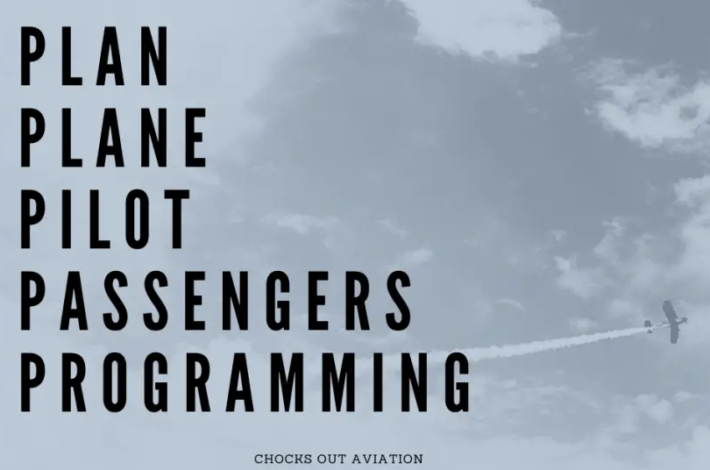
The aviation industry has revolutionized global transportation, connecting people and places like never before. Behind the scenes, a complex ecosystem comprising various elements plays a crucial role in ensuring safe and efficient air travel. In this article, we will embark on an in-depth exploration of the 5 Ps of aviation: plan, plane, pilot, passengers, and programming. By the end of our journey, you will have a profound understanding of the intricate workings of the aviation world.
The 5 Ps of Aviation Explained
Plan: Navigating the Skies
Planning is the bedrock of every successful aviation operation. From developing flight routes to coordinating logistics, meticulous planning ensures a seamless travel experience. Let’s delve into the key aspects of aviation planning:
1. Flight Planning
Flight planning involves a detailed analysis of various factors that impact a flight’s safety and efficiency. This includes considering weather conditions, air traffic control, fuel consumption, and alternate routes. The goal is to chart a course that maximizes fuel efficiency and minimizes travel time.
2. Airport Operations
Airports are bustling hubs of activity, requiring careful planning to facilitate smooth operations. Key considerations include runway capacity, gate allocation, baggage handling, and passenger flow management. Effective airport planning ensures seamless transitions for travelers and efficient aircraft turnarounds.
Plane: Engineering Marvels
The aircraft itself stands at the heart of aviation. Engineering marvels of modern technology, airplanes are the result of meticulous design and rigorous testing. Let’s explore the essential elements of an aircraft:
1. Aerodynamics
Aerodynamics plays a pivotal role in aircraft design, enabling efficient flight. Wings, fuselage, and control surfaces are meticulously shaped to minimize drag and optimize lift. Through advances in aerodynamics, airplanes can conquer the skies with grace and stability.
2. Propulsion Systems
Powering an aircraft demands advanced propulsion systems. Jet engines, turboprops, and turbofans propel planes through the air, relying on the principles of thermodynamics. These cutting-edge propulsion systems deliver the thrust necessary for takeoff, cruising, and landing.
Pilot: Masters of the Skies
Pilots are the custodians of aviation, entrusted with the responsibility of safely maneuvering aircraft through the skies. Let’s soar into the realm of pilots and explore their world:
1. Flight Training
Becoming a pilot requires rigorous training and education. Aspiring pilots undergo extensive flight training programs, where they learn essential skills such as navigation, communication, and emergency procedures. Simulators and flight hours build experience and hone their decision-making abilities.
2. Aviation Regulations
Pilots are well-versed in aviation regulations, ensuring compliance with stringent safety standards. They must be knowledgeable about airspace restrictions, navigation protocols, and emergency protocols. Adhering to regulations keeps the skies safe for all aircraft.
Passengers: The Human Connection
At the heart of aviation lies the connection between passengers and their destinations. Ensuring a pleasant and secure journey is paramount. Let’s explore the passenger experience in the aviation industry:
1. In-Flight Comfort
Airlines strive to enhance passenger comfort, offering amenities such as spacious seating, entertainment systems, and catering services. Additionally, cabin pressurization and climate control systems ensure a comfortable environment at high altitudes. Passenger satisfaction is key to building a loyal customer base.
2. Safety and Security
Passenger safety and security are non-negotiable in the aviation industry. Rigorous security checks, thorough safety inspections, and well-trained cabin crew are essential components of a safe flight. Airlines prioritize passenger well-being to instill confidence in air travel.
Programming: Innovating the Skies
In the digital age, aviation has embraced technology-driven solutions for enhanced safety, efficiency, and customer experience. Let’s explore the role of programming in aviation:
1. Air Traffic Management
Sophisticated software systems assist air traffic controllers in managing the flow of aircraft. These systems optimize routes, monitor weather conditions, and maintain safe separation between flights. Programming plays a crucial role in ensuring efficient air traffic management.
2. Aircraft Maintenance and Diagnostics
Programming is utilized in aircraft maintenance to monitor and diagnose the health of critical systems. Advanced algorithms analyze data from sensors and avionics, predicting maintenance requirements and minimizing downtime. By proactively identifying issues, airlines can ensure aircraft remain in optimal condition.
Future Trends: Innovations on the Horizon
The aviation industry is at the forefront of technological advancements, constantly pushing the boundaries of what is possible. Let’s take a glimpse into the future and explore some exciting developments on the horizon:
1. Electric and Autonomous Aircraft
Electric propulsion systems and autonomous flight technologies are gaining momentum in aviation. Electric aircraft promise reduced carbon emissions and quieter operations, while autonomous systems have the potential to improve safety and efficiency. Ongoing research and development aim to make these technologies viable for commercial aviation in the near future.
2. Connectivity and Passenger Experience
Connectivity is set to revolutionize the passenger experience. High-speed internet, personalized in-flight entertainment, and seamless connectivity throughout the journey will become standard offerings. Passengers can stay connected, be productive, and enjoy a tailored travel experience from takeoff to landing.
Conclusion
The 5 Ps of aviation—plan, plane, pilot, passengers, and programming—form the foundation of the vibrant and dynamic aviation industry. From meticulous planning and cutting-edge aircraft design to skilled pilots and a focus on passenger comfort, every aspect contributes to the seamless operation of air travel. As technology continues to advance, the aviation industry will soar to new heights, ensuring safer and more efficient flights for all.